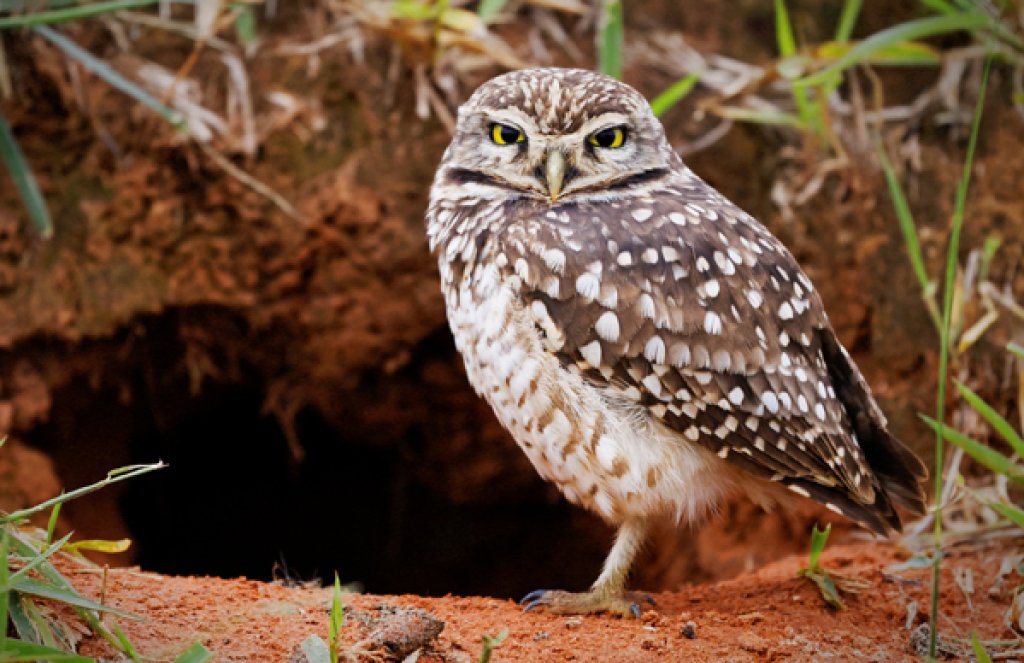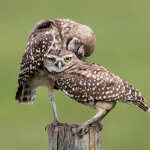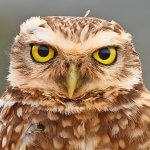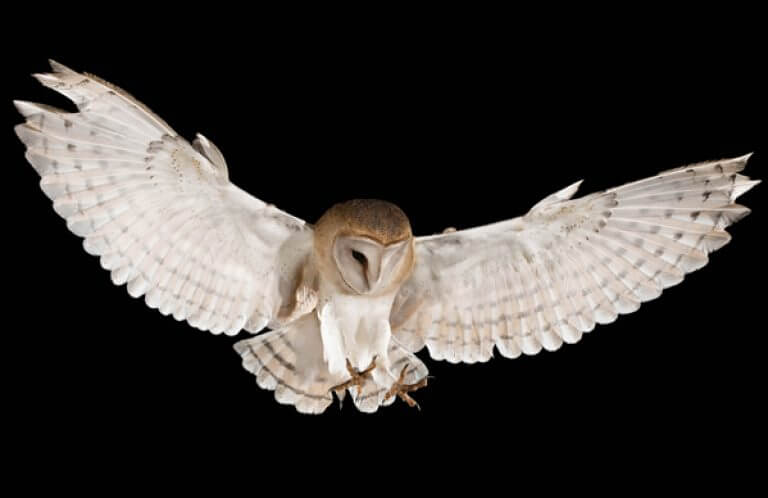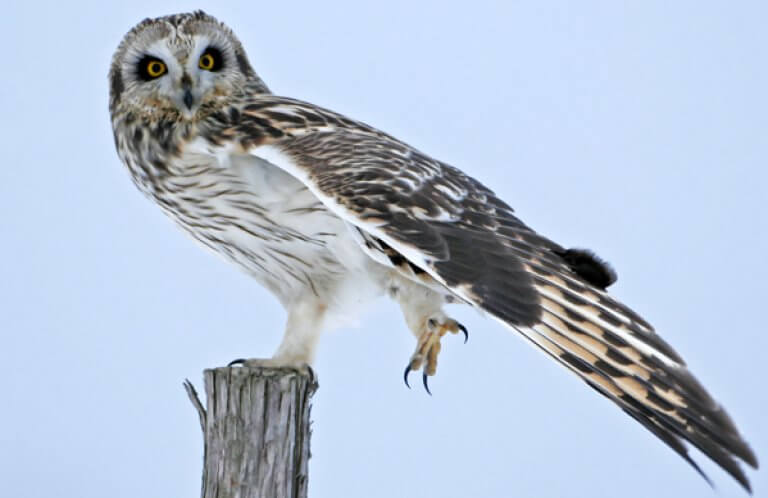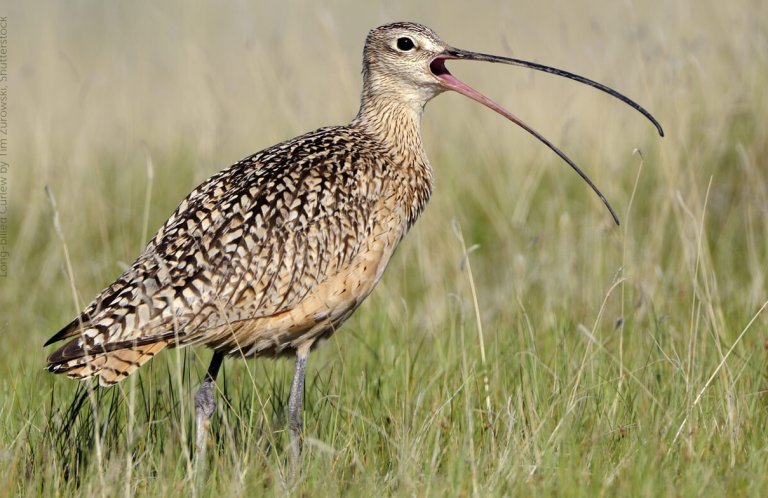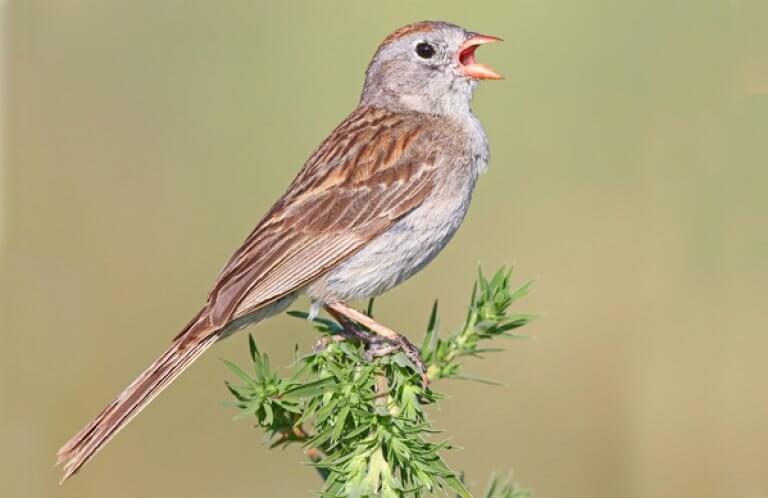About the Burrowing Owl
In some parts of the American West, the long-legged Burrowing Owl is known as the “howdy owl” because it seems to nod in greeting at passers-by. This up-and-down action, however, is really just the owl sizing up potential danger.
The Burrowing Owl's species name cunicularia comes from the Latin word for "burrower" or "miner," and true to its name, it nests underground, usually in a burrow taken over from another species sharing its habitat, often a prairie dog, ground squirrel, or tortoise. In areas of soft or sandy soil, this small owl, which is about the size of an American Robin, may dig its own burrow.
Underground Adaptations
The Burrowing Owl has several adaptations more often seen in subterranean mammals such as gophers and moles. It has a higher tolerance for carbon dioxide than do most other birds, which allows it to nest and roost in tunnels lacking fresh airflow. It also has a habit of storing extra food against times of scarcity. (See “Keeping the Larder Supplied,” below.)
Unlike other owls such as the Barn Owl and Long-eared Owl, the Burrowing Owl is often active during the day. Inhabiting wide-open spaces, this owl perches on the ground, where it's effectively camouflaged by its brown and white-speckled plumage. When threatened, it will often run or flatten itself against the ground, rather than fly away.
Songs and Sounds
Burrowing Owls have a number of different vocalizations, including calls given by adults to stake claim to territory and court mates, to express alarm, and (in the case of young), to beg for food. Young Burrowing Owls can also emit a raspy scream that mimics a rattlesnake rattle, which may discourage potential predators.
Listen here:
Young Burrowing Owls' "rattlesnake" calls: https://acousticatlas.org/item/545. Audio file copyright 2006, Jeff Rice, Acoustic Atlas.
Breeding and Feeding
Although most female raptors are larger than their mates, both sexes of Burrowing Owl are about the same size. Burrowing Owl pairs usually only stay together for one breeding season, starting in early spring, when males posture, call, and take short flights to court potential mates.
Once mated, the male locates a suitable tunnel, which he lines with dried plants, feathers, and dry, shredded cow manure. This behavior masks the birds' scent from potential predators and attracts beetles and other large insects, providing easy prey.
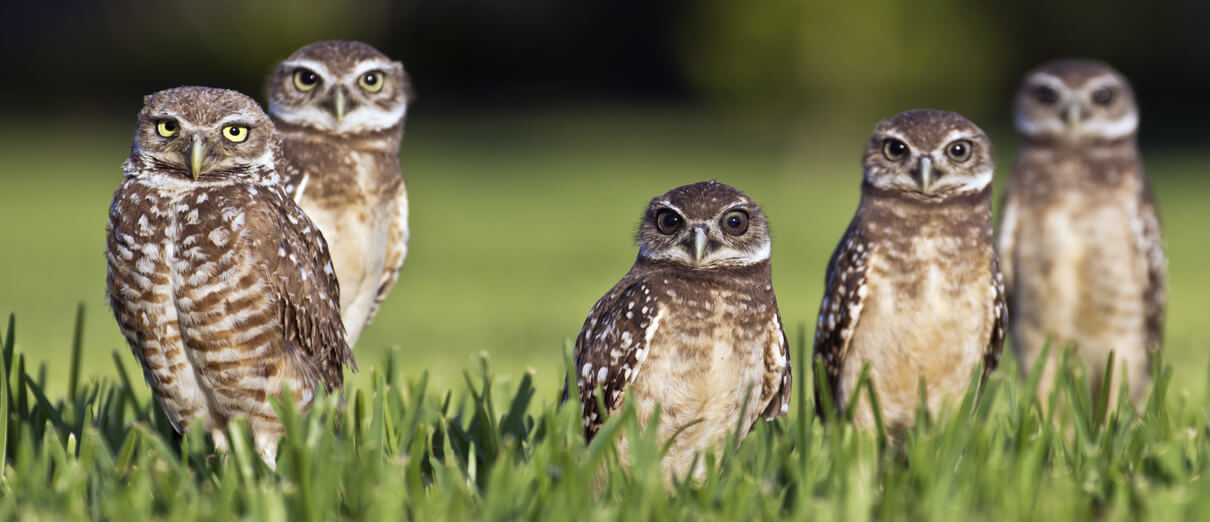
After the male finishes arranging the nest burrow, the female moves in, laying a clutch of six to 12 eggs. The male stays nearby in a separate burrow, and provides food for the female as she incubates. Both parents feed the young after they hatch. Nestling Burrowing Owls fledge in about six weeks, then remain in their parents' territory as they finish maturing.
Keeping the Larder Supplied
Although Burrowing Owls are often active during the day, they do most of their hunting from dusk until dawn, using their night vision and acute hearing to full advantage. Long legs enable these unusual owls to pursue quarry on foot as well as in flight. They predominantly prey upon invertebrates, including grasshoppers, crickets, moths, and beetles, but will also snatch small snakes, lizards, mice, voles, shrews, frogs, songbirds, and even ducklings.
Burrowing Owls cache food, stashing it in their burrows to ensure an adequate supply during the nesting season. When prey is abundant, their underground larders can contain up to several hundred items!
Region and Range
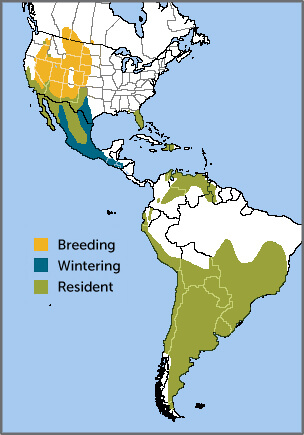
Like the Short-eared Owl, the Burrowing Owl is widespread throughout the Americas, with up to 22 subspecies recognized. This species ranges from southern Canada through southern Mexico; is found in Florida and on a number of Caribbean islands; and is widely distributed in South America, including eastern Colombia, northern Venezuela, and western Guyana, and from western Ecuador to southern Brazil, south to Tierra del Fuego. It is rare in Central America in winter.
Birds that breed in Canada and the northern United States usually migrate south to Mexico and the southern U.S. for the winter months, but most Burrowing Owls are year-round residents of grasslands, prairie, pastures, or deserts within their range. If welcomed and not harassed, they can also adapt to similar areas provided by human activity, such as golf courses and airports.
Conservation
Benefiting from BirdScapes
Threats to the Burrowing Owl include habitat loss, pesticide use, and, in North America, prairie dog eradication programs, which limit suitable burrowing habitat. Many Burrowing Owls are killed in collisions with cars.
This species occurs in ABC's Northern Great Plains BirdScape, where populations benefit from ABC's work for one of its flagship species, the Long-billed Curlew. These conservation efforts include retaining and enhancing native habitats, managing livestock grazing to restore and improve grasslands, and minimizing the use of pesticides to maintain invertebrates as a food source.
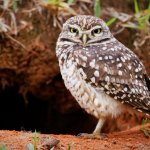
Help support ABC's conservation mission!
In Mexico, ABC is also working with partner Pronatura Noreste to implement land stewardship practices in the El Tokio and Valles Centrales BirdScapes, where Burrowing Owls also occur.
These Mexican BirdScapes provide essential wintering habitat for the curlew and other grassland species such as the Mountain Plover and Sprague's Pipit, as well as sheltering the Worthen's Sparrow, an endemic resident bird listed under the Alliance for Zero Extinction.
Get Involved
Policies enacted by the U.S. Congress and federal agencies, such as the U.S. Fish and Wildlife Service, have a huge impact on America's birds. You can help shape these rules for the better by urging lawmakers to prioritize birds, bird habitat, and bird-friendly measures. To get started, visit ABC's Action Center.
Living a bird-friendly life can have an immediate impact on the birds around you. Doing so can be as easy as adding native plants to your garden, avoiding pesticides, and keeping cats indoors. To learn more, visit our Bird-Friendly Life page.
American Bird Conservancy and our Migratory Bird Joint Venture partners have improved conservation management on more than 6.4 million acres of U.S. bird habitat — an area larger than the state of Maryland — over the last ten years. This is a monumental undertaking, requiring the support of many, and you can help by making a gift today.





































